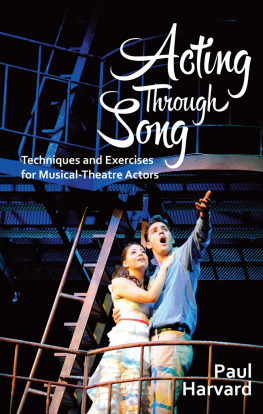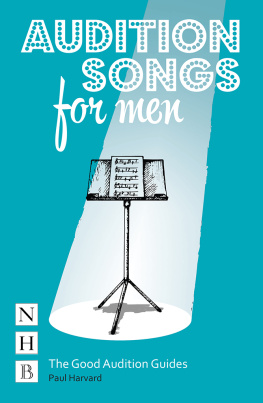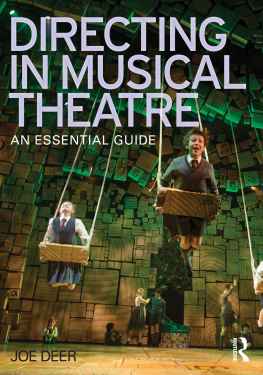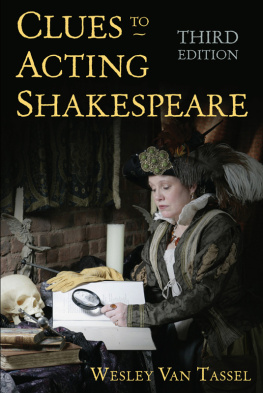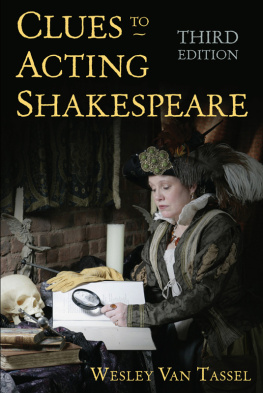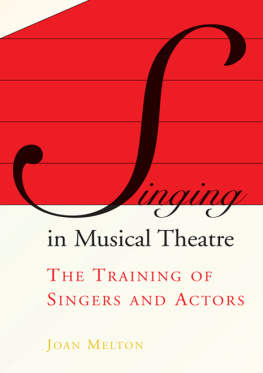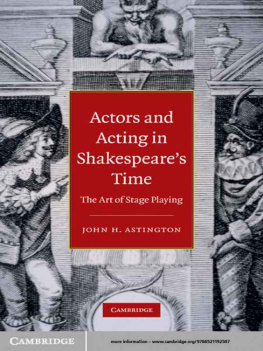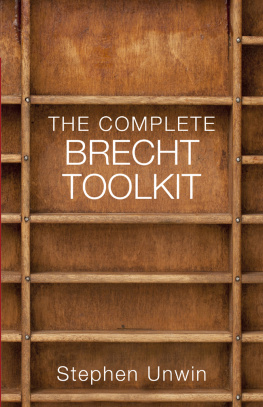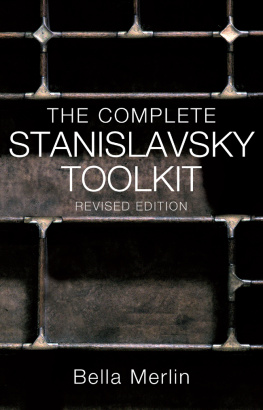Paul Harvard
Acting Through Song
Techniques and Exercises
for Musical-Theatre Actors

NICK HERN BOOKS
London
www.nickhernbooks.co.uk
For Kiron
Foreword
by Daniel Evans
As an actor fortunate enough to do plays and musicals, I was always of the mind that both forms of theatre required the same acting techniques. So, when I worked on my first musical as part of Trevor Nunns Ensemble at the National Theatre in 1999, where a single company of actors performed a repertoire of plays and musicals over the course of a year, I felt strongly that I should follow the same preparatory process and apply the same rehearsal techniques to Bernsteins Candide as to Shakespeares Merchant of Venice.
However, I quickly came to realise that, while certain fundamental acting techniques and skills were applicable to both forms, there were also demands being made on the actors that were particular to each genre. For instance, where verse-speaking is concerned, there are rules that you ignore at your peril. Similarly, in musicals, there are diktats that are pertinent only to singing the most obvious being that the composer usually dictates the pitch, rhythm, pace and dynamic of any sung dialogue.
Thus, the actor is presented with a complex challenge: she or he has no choice but to surrender to the demands of the score, whilst upholding the illusion that each musical thought is spontaneous and free. Then theres the question of how to make the often tricky transition from spoken dialogue into song, so that the action is woven seamlessly. Or the perplexing question of what exactly to do on the button? Or what on earth to do during musical pauses between verses, for example?
It is in the light of these questions that this book on acting through song is extremely welcome. It is possibly the most methodical, thorough and practical book on the subject Ive ever read. Paul Harvard, whilst understanding that musical theatre is a heightened form of theatre, is endlessly practical about how to approach the doing of it. He offers fascinating exercises that cut straight to the heart of each challenge. His passion is infectious and his manifesto persuasive. He also has an ambitious aspiration: to make a positive difference to the acting we see on our musical stages. I daresay, with the publication of this book, its an ambition hes bound to achieve.
Daniel Evans is Artistic Director of Sheffield Theatres, and has acted in many plays and musicals around the UK, at the Royal Court, the National Theatre, and in the West End. He won Olivier Awards for Best Actor in a Musical for his performances in Merrily We Roll Along (Donmar Warehouse) and Sunday in the Park with George (Menier Chocolate Factory, West End and Broadway, where he was also nominated for a Tony Award).
Acknowledgements
A favourite author of mine, the business expert Jo Owen, suggests it is a good idea to start at the end and work backwards. Following his advice, I would like to begin by thanking the wonderful team at Nick Hern Books who have brought this work to publication. Notably the insightful Matt Applewhite, who has helped steer me through the latter stages of this new adventure. My respect and gratitude is extended to Aileen Gonsalves and the actors of Butterfly Theatre who have helped me explore some of the processes in this book, whilst generously sharing their own vibrant working methods. I must also say a few words about my students and colleagues at Arts Educational, in particular Jane Harrison, Michael Bray and Gareth Farr. A more positive and forward-thinking group of individuals you could not wish to find. It has been in their creative company that this book has reached fruition. For that I am truly grateful.
But all that ends has a beginning. I will always consider myself lucky to have run a department of a drama school, the Urdang Academy, at the most exciting possible time of its development: when it was first finding its identity as a force in musical-theatre training. During that period, I was blessed to work with an inspiring group of practitioners on a training system for young actor-singers that felt fresh and vital. Without their generosity and talent, the long hours of vibrant discussion, the ideas in this book would not have taken flight. There are so many people whom I wish to thank, but in particular I must mention the contributions of Michael Howcroft, Robert Greenhill, Lisa Thorner, Beth Vyse, Helen Ashton and Laurann Brown. What we created, we created together.
I would also like to pay recognition to the students who studied acting through song with me in those early days. It was in the crucible of those classes that the ideas in this book were first hammered into shape. I will always look back with great fondness on those years. That was a studio full of laughter, tears and much perspiration, but within those four walls we created work that was worthy of the craft that we love.

The author and publisher gratefully acknowledge permission to quote from the following songs:
Far from the Home I Love from Fiddler on the Roof
Music by Jerry Bock. Lyrics by Sheldon Harnick. Copyright 1964 by Alley Music Corp. and Bug Music/Trio Music Co. Copyright renewed and assigned to Mayerling Productions Ltd and Bock IP LLC for the United States, and to Alley Music Corp., Bug Music/Trio Music Co. and Bock IP LLC for the world outside the United States. All rights reserved. Reproduced by kind permission of Carlin Music Corp., London, NW1 8BD.
Giants in the Sky from Into the Woods
Music and lyrics by Stephen Sondheim. Lyrics copyright 1987 by Rilting Music, Inc. All rights reserved. Reprinted by kind permission. Published by Theatre Communications Group and distributed in the UK by Nick Hern Books.
How Many Tears? from Martin Guerre
Music by Claude-Michel Schnberg. Lyrics by Alain Boublil and Stephen Clark. Copyright 1998 by Bouberg Music Limited. Administered for the UK and Eire by Alain Boublil Overseas Limited/Administered for the USA by Alain Boublil Music Limited (ASCAP) c/o Joel Faden and Company Incorporated. International copyright secured. All rights reserved.
Stars and the Moon from Songs for a New World
Music and lyrics by Jason Robert Brown. Copyright 1996 by Jason Robert Brown. All rights controlled by Semolina Farfalle Music (ASCAP). International copyright secured. All rights reserved. Reprinted by kind permission of Hal Leonard Corporation.
Introduction
Musical theatre has the potential to be extraordinary. As a genre, it brims with possibility. Often dismissed as a frivolous style of entertainment, the musical can actually be the most powerful and affecting of theatrical forms. I remember the first time I saw a production of Parade by Jason Robert Brown and Alfred Uhry. At the time it was not a musical I knew well, but as I took my seat in the auditorium my expectations were sharp. A changed man left the theatre that night. That performance showed everything that a musical could be.
A great musical like Cabaret, Fiddler on the Roof or Parade has all of the qualities you find in a first-rate play: an engaging storyline, incisive writing, memorable characters, sharp comedy and imaginative storytelling. But it also possesses an additional element, a unique quality that can broaden its appeal and deepen its resonance: the wide and intrinsic use of music.
Next page
